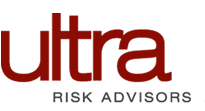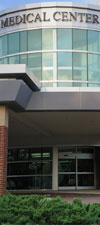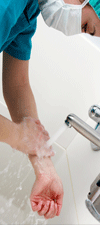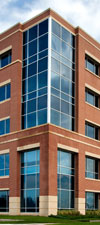Home healthcare workers, unlike healthcare facility care providers, should be aware of a variety of safety risks that are unique to the private home environment. Awareness of risk factors and learning safe practices can greatly improve the quality of care and reduce the risk of patient or employee injury, potential lawsuits and costly insurance claims.
Risk #1: Patient Care Environment – Slips, trips and falls are the second most common cause of injury in a home healthcare setting. This includes injury to the client or to you – so utmost precautions should be taken to avoid both. Keep safety as a top priority, and constantly reevaluate the state of safety in the care environment, you will provide better care for your patients and prevent potential accidents or injuries.
Risk #2: Infection Control – As a home healthcare worker, you are responsible for the safe use and disposal of all sharps equipment you use in the patient’s home. However, patients and their family members may put themselves (and you) at risk by improperly disposing of sharps. You may find contaminated sharps in the home, and you can’t always assume that proper disposal containers will be available. The lack of control in the home environment also includes excess distraction such as pets or disruptive family members.
Risk #3: Patient Handling – One of the leading causes of injuries to patients and employees comes from the way patients are physically handled. First, it’s important to review all available material on lifting and transferring patients that are provided by your company and be aware of your agency’s policies related to safety. One of the most effective methods for reducing risk of injury is the use of assistive devices that will help avoid physical strain. Whenever possible use devices designed to assist with patient transfers – draw sheets, slide boards, rollers, slings, belts and mechanical hoists.
Risk #4: Pets and Animals – Animal bites and scratches are a risk unique to healthcare workers in the home setting. Bites may inflict significant injury and result in the need for surgical care. Scratches, tripping over pets and allergic reactions are other associated risks. Even if a pet seems benign, remember that they still pose a risk, as any animal can become aggressive if it feels its territory is being infringed upon. Unless you know the animal well, avoid any contact with pets.
Risk #5: Documentation – Complete and accurate documentation is important for all medical professionals and home healthcare workers are no exception. Uniquely challenging circumstances may occur in a home healthcare setting, and it’s important to never let negative or defensive emotions drive your documentation – it’s simply not worth it. Stick to the facts, and document everything on time. This reduces liability and the need to defend the care provided. Also remember, If it’s not documented in the medical record, it’s not done.
Here’s a link to ten quick safety tip videos for home healthcare professionals. The videos were created by our expert risk management team and include specific and practical tips that can be implemented right away to help reduce safety risks.
10 Quick Home Health Safety Tips from Ultra
Brokers, did you know Ultra has an exclusive program with binding authority for outpatient medical facilities? Learn more here: Ultra Health Express







COMMENTS
No comments yet. You should be kind and add one!
The comments are closed.